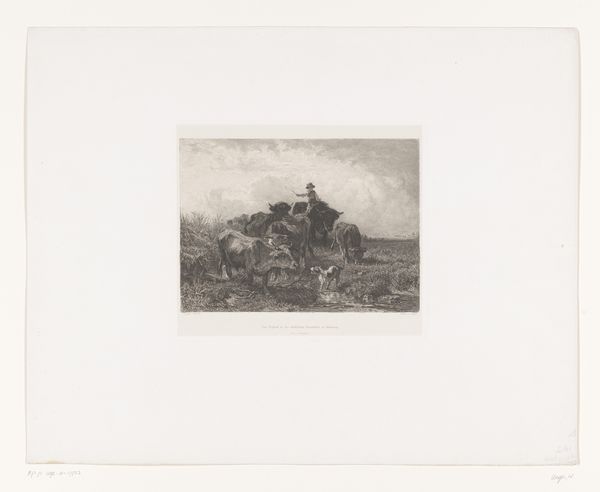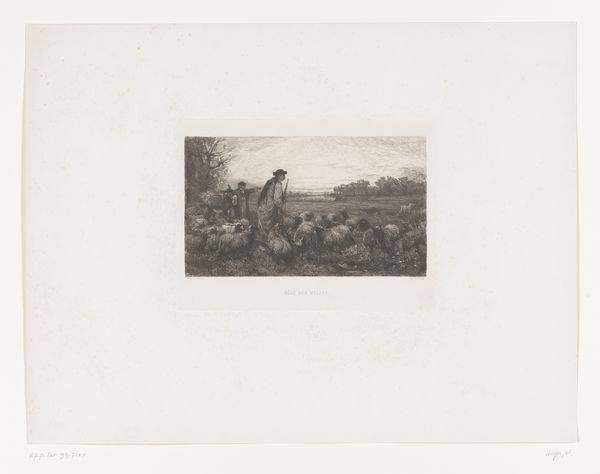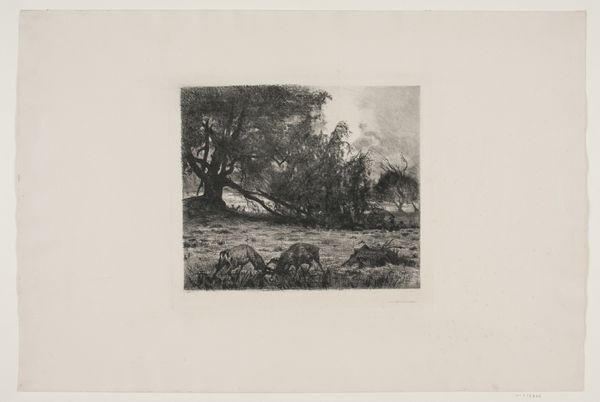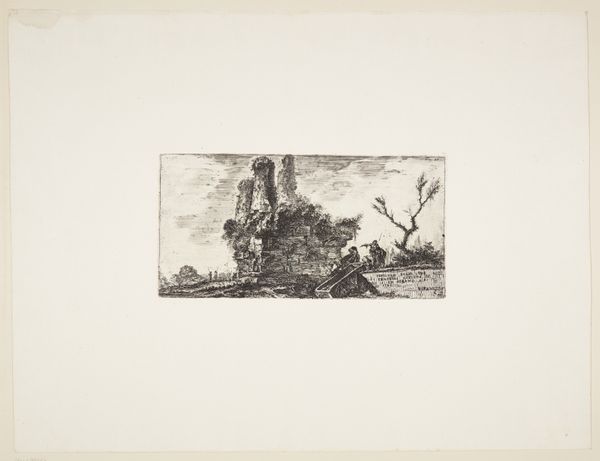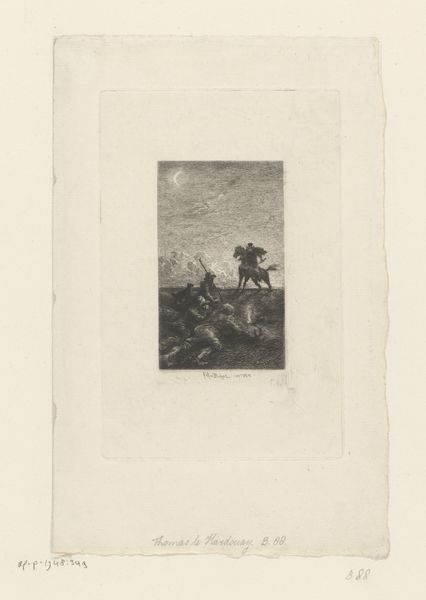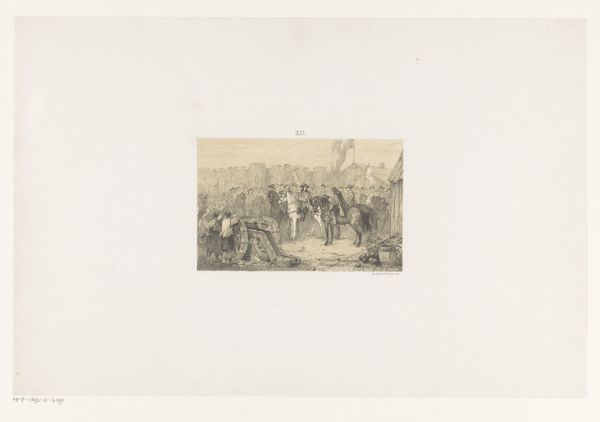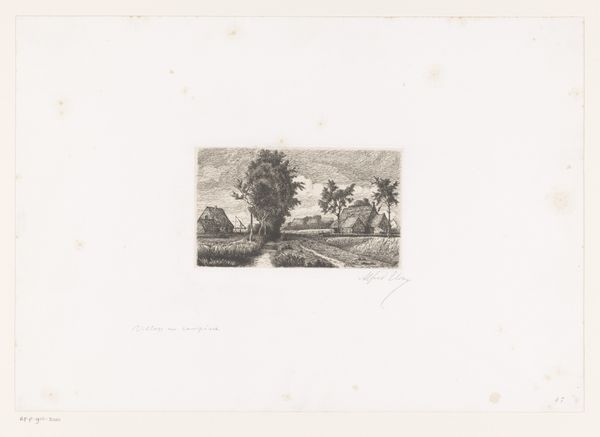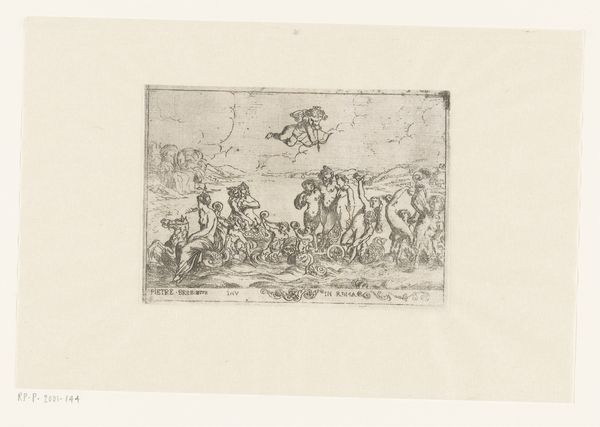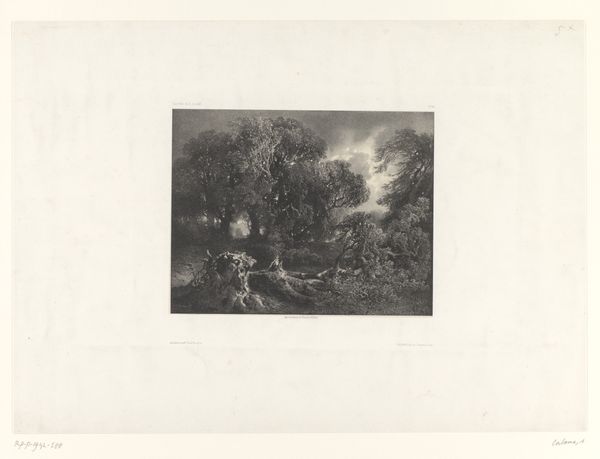
print, etching
# print
#
etching
#
landscape
#
history-painting
#
realism
#
monochrome
Dimensions: height 274 mm, width 369 mm
Copyright: Rijks Museum: Open Domain
This print, ‘Ruiterslag’ or cavalry charge, was made by Dominicus Anthonius Peduzzi in the mid-19th century. The process used to create it, lithography, gives it a distinctive look. Unlike traditional engravings that are carved into metal, lithography relies on the subtle properties of limestone. The artist draws directly onto the stone with a greasy crayon, then the stone is treated so that ink only sticks to the drawn areas. The printmaker then transfers the image to paper. Lithography was a relatively new technology at this time, and it democratized printmaking, allowing for a wider range of tones and effects. You can see this in the hazy, almost dreamlike quality of the battle scene, which wouldn't be possible with older, more labor-intensive methods. The mechanization of printmaking allowed artists to reproduce images quickly and cheaply, reaching a broader audience and fueling a growing market for mass-produced art. By attending to materials and making, we can get a sense of the historical and social conditions that brought this image into being.
Comments
No comments
Be the first to comment and join the conversation on the ultimate creative platform.
